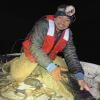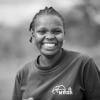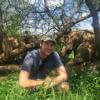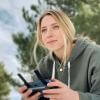Presentation opportunity: Text analysis for conservation (NACCB 2024)
8 January 2024 4:05pm
Looking for a Supervisor/Research Group - ML-driven Marine Biomonitoring
3 January 2024 2:05pm
7 January 2024 6:06pm
Thanks Aude, very useful. Will reach out to them!
Gunshot detection technology deployed
7 January 2024 5:41pm
The sound maps that predict poachers' movements
7 January 2024 5:33pm
Assessing the biodiversity impact of palm oil facilities around the world
4 January 2024 12:07pm
Bird Acoustic Surveys: Comparison with traditional transect methods
6 November 2023 9:32am
4 December 2023 11:36am
Hi Theresa. In comparison to traditional survey, I think that the time/cost benefits of acoustics are good. Certainly the set-up, maintenance, and data management requirements are minimal. And if there is significant travel time to site, and the recording period of acoustic survey is long, then I think the benefits are compounded (i.e. there are economies of scale to acoustics that you don't get with trad surveys).
Until the last year or two, the data analysis for species identification has been the time-consuming part. However, now that systems such as BirdNET are available, this issue is fairly well dealt with (but still needs a little bit of skill/experience).
A couple of scientific papers have assessed these costs/benefits - I hope these make an interesting read.
Carlos
2 January 2024 3:28pm
Thanks for taking the time to respond and share these articles!
3 January 2024 4:55pm
A very nice read, especially for me someone new to the field as myself. Nice to see all of the various approaches and to know I wasn't re-inventing the wheel but adding something new (Potential new platform for real time localization).
Looks like my timing wasn't ideal to be included in your summary. Maybe for version #2 :)
Thanks for sharing!
Happy New Year WILDLabbers! What are you looking forward to in 2024?
2 January 2024 11:31am
2 January 2024 4:01pm
Excited for COP16 later this year in Colombia!
Other events of potential interest -
- World Biodiversity Forum
- European Congress on Conservation Biology
- North American Congress for Conservation Biology
- World Ecoacoustics Congress
- African Bioacoustics Conference
- (virtual) World Species Congress
- UNFCCC COP29
3 January 2024 8:48am
Some really great events to look forward to, thanks so much @carlybatist for sharing these!
Tranforming Conservation Together: Highlights from the 2023 EarthRanger User Conference
2 January 2024 10:11pm
10 January 2024 5:23am
14 January 2024 3:06am
15 January 2024 9:54pm
Spotlight on the Towering Marvels: Exploring the population dynamics of Reticulated Giraffes in Mugie Conservancy.
2 January 2024 1:48pm
ReWilding Europe a Data Annotation Pipeline for training models [code and model weights]
2 January 2024 6:05am
Anyone going/presenting/talking at SICB?
1 January 2024 9:11pm
Data dissemination to boost community-based conservation.
1 January 2024 9:07am
Understanding wildlife crimes in the Tsavo ecosystem...
31 December 2023 8:22pm
What is your favorite package or software for visualizing animal tracking data?
12 September 2023 6:52pm
29 December 2023 11:09pm
30 December 2023 2:32pm
It was indeed recorded and can be viewed here:
Data Viz Inspo for the Holidays: December 20, 2023 (youtube.com)
Cheers,
Lars
31 December 2023 8:03pm
Appreciate that Lars!
WICT2022: Bridging Gaps, Shaping Women in Global Conservation.
31 December 2023 2:03pm
Practical sound localization on the Raspberry Pi
17 December 2023 5:31pm
18 December 2023 11:24pm
Worth a read? The synopsis sounded very star trek like.
21 December 2023 6:22am
Probably not unless you are old enough to be nostalgic. I don’t think that’s you Brett 😀
31 December 2023 10:55am
Cool! My Sound Localization project has hit hackaday. The use case of fireworks localization was pure sensationalism.
CT Textbook?! Want to contribute/help author? Reach out!
21 February 2023 12:56pm
8 August 2023 6:26pm
Is there an update on this effort? It'd be great to create a fully open source open education resource (OER) from this!
26 October 2023 4:45am
Hi Andrew,
Are you still working on this text? I'd be interested in authoring a chapter, if you are. I'm a reasercher in Human Centered Design and Engineering at University of Washington, and I work in this space.
29 December 2023 2:07pm
Hi Stephie,
I want to start by apologising for not responding for more than ten months.I continue to be impressed by the information that Wildlabs provides, particularly in the conservation tech sector, which I try to follow because it's a subject that I'm really enthusiastic about. I am now situated in Germany.
Open-Source design guide for a low-cost, long-running aquatic stereo camera
13 December 2023 5:47pm
15 December 2023 4:53pm
This is awesome - thanks for sharing Stephanie!! We actually were looking around for a low-cost video camera to augment an MPA monitoring project locally and this looks like a really great option!
Cheers, Liz
28 December 2023 8:54pm
Thank you for sharing! Super interesting, as we don't see many underwater stereo cameras! We also use Blue Robotics components in our projects and have found them reliable and easy to work with.
Anti-poaching poison detection sensor for temic & karbadust (carbamate)
28 December 2023 2:52pm
AI to operate Wildlife Passage Gates
11 December 2023 4:17pm
22 December 2023 2:02pm
In this case, I would use BLE proximity - enough and accurate range, low cost, long battery life, no false positives - KISS ;)
22 December 2023 2:25pm
Aaah, this article suggests that RFID can be used for much greater distances so looks like RFID still remains the best choice.
22 December 2023 4:20pm
BTW. I found out that the Jetson Orin NX 16GB module is drawing around 20W when running continuous inference, processing streams from 6x cameras at 6 fps.
I'll try and find out what you can do with a Pi 5 and a smaller model over Christmas.
Foraging behavior of the Vulnerable Somali Ostrich in Northern Kenya
22 December 2023 9:05am
22 December 2023 11:17am
Apply to Beta test Instant Detect 2.0
11 May 2023 10:55am
21 December 2023 3:48am
Will you accept personal/hobbyist focused on conservation on their small plots of land (10-100 acres)?
I would, and know others, who would happily pay more than the official conservationists rate for the service, which could help to further subsidize the project. (Referring to your statement here: https://wildlabs.net/discussion/instant-detect-20-and-related-cost)
Mesh camera trap network?
9 April 2017 1:29pm
8 November 2021 1:05pm
Hi Sam,
Impressive! Any chance the LoRa code is open source? I should like to take a gander.
Thanks
21 December 2023 3:41am
How's the project going? Plans to open-source and share more about it?
The website mentions it's in alpha stage, going into beta.
21 December 2023 3:42am
Oh I see recent threads on the topic. Sharing here to link people over.
Semi-automated prediction of behavioral states in wild understudied King vultures (Sarcoramphus papa)
20 December 2023 1:34pm
For the current e-obs newsletter, Chris Beirne and I have summarized our previous work on the annotation of King vultures in Costa Rica.
Hydromoth for coastal & offshore surveying
16 November 2023 7:36am
18 November 2023 1:47am
Hi Sol,
I think your concern is well placed. The pros typically tow an array of hydrophones, in its simpler configuration it looks like a long fat rubber hose containing maybe a dozen transducers feeding their electrical signals to a recording unit back on the ship. All this is done to reduce noise from the ship, from waves crashing, and flow noise. The multiple transducers can also be electronically tuned to be directional so that it can be "pointed" away from a noise source (like the ship).
In your position, I would just try the simplest thing that could work, then fix the problems as they arise. It could be you may need to be dead in the water while recording. To address surface noise (slapping waves, wind), you could mount the hydromoth low down on a spar buoy, which you tow into position.
Best of luck, it sounds like an interesting project (c:
19 December 2023 2:20pm
Hydromoths are great for the price but they do not have the most streamlined housing and audio quality won't be as good as something like a SoundTrap or really any recorder with a proper hydrophone and 16-bit +DAQ system.
If you can afford it, this is an excellent SoundTrap based towed autonomous system NOAA have been using. It might work towed behind an autonomous vehicle
Alternatively, if you can have something inside the vehicle, a simple tape recorder (e.g. Tascam DR40X) and hydrophone on cable will provide excellent sound quality. You could also use something like a Raspberry Pi with audio focussed ADC hat to record but that would require a bit more programming. Even consider a standard AudioMoth and plug a proper hydrophone into the audio jack - this would still have a 12-bit ADC but would provide better sound quality than a hydromoth (hydrophones are more omnidirectional and there's no air filled causing reflections and attenuation)
20 December 2023 6:57am
If you are considering an external microphone and a towed system, then you would also be in a position to consider a raspberry pi with an external microphone with sbts-aru. Another option:
Seeking Host Organisations for Travel Scholarship Application
19 December 2023 12:54am
20 December 2023 3:07am
Hi Eva,
Me and my colleagues run a small NGO based on Yogyakarta in Indonesia, although our projects are spread around the country. One of our active project is working with the movement ecology of Sunda gharials in Berbak-Sembilang National Park. One of the other is for Malayan Giant Turtle conservation using one-plan approach, which we are planning to start in situ phase. We can't give you promise about anything, but are able to be the host organization and would love to talk the opportunity!
Cheers,
Dhanu
Subsea DIY Burnwire for Deep-sea BRUVS
6 December 2023 3:49am
11 December 2023 10:21am
Yeah from memory we found it difficult to get the relatively high voltage (~50VDC) and current (can't remember) in a small package, but we had almost no experience back then and gave up fairly quickly. We also found it difficult to get much help from the company if I remember correctly...
so is the problem with the nichrome waterproofing everything? I picture something like coating the nichrome in high temp grease (especially where it's in contact with the nylon line and the line itself) and encapsulating the entire thing in a semi-flexible silicone (so the line can slip out after detechment) with something buoyant to help pull it towards the surface maybe? Speaking of, how are tags being recovered (i.e. do they need to pop to the surface)?
15 December 2023 4:17pm
Hi Titus,
We've used this design/procedure for many years with our Deep Sea Camera systems, with good reliability. Not OTS but not hard to make and most of the materials come out to be inexpensive per unit. The most expensive item is the M101 connector ($25ea), but if you get them with extra length on the cable, you can essentially cut it off at the point where it joins the burn-loop and reuse that connector until it gets too short. You'd also need an F101 connector integrated with your BRUV, this connecting with the burnwire and forming the the positive side of the circuit, and a ground - our ground connection goes to a large bolt on the frame near the burnwire loop - but that connector generally shouldn't need replacement unless it gets damaged.
These burnwires generally break in 3-7min, burning at about 1Amp, ~14.5V. A thinner version of the coated wire could go faster or with less power required.
We do also employ galvanic releases as backups. I really like redundancy on recovery mechanisms! The ones we use are made by International Fishing Devices, Inc. Various distributors sell certain models of their products (i.e. different time durations) but if you contact them directly, they can also make custom duration ones for you.
19 December 2023 4:47pm
Hi Titus,
I've used latching solenoids as a release in a fresh water application. The product linked to is the one I have used, but has been discontinued (it's been quite a while). Anyway these little devices hold a plunger in place with a permanent magnet, but release the plunger when a coil is energised that counters the magnet. The holding force is not great, but more than enough to keep the safety on a mechanical trigger. The whole device can be potted and sealed (ideally under vacuum to eliminate voids). When pushing the plunger in to arm the solenoid, there is a definite click when the magnet kicks in, to confirm the locked state.
A similar device is the electropermanent magnet, which doesn't have a plunger, in fact it has no moving parts. You provide the steel piece that that this device will release when energised, as with a latching solenoid. It generally has greater holding force than a latching solenoid. I've used these in a seawater application. It's worth noting that there exist ferromagnetic stainless steels that can be used here to avoid corrosion.
Thanks,
-harold
WILDLABS Colorado Conservation Tech Meetup
19 December 2023 12:04am
New Raspberry Pi Sound Localizing ARU is now fully released and ready for use
7 October 2023 2:10pm
18 December 2023 3:42pm
Hi @chrisgnicholas ! AudioMoth has a pipeline for exactly that:
Cheers,
Lars
18 December 2023 7:06pm
Very cool, real-time audio pattern matching is exactly what I meant! I'd love to hear updates as it goes.
18 December 2023 7:29pm
When I designed the recorder. I chose it to use jackd2 instead of pulse audio or direct alsa access because unless I was mistaken it could support multiple consumers of the sound source and the other approaches not.
Originally its purpose was part of my security system so it records as well as being able to connect and listen live. That’s simply a case of also installing icecast2 and darkice onto the same system. Then I discovered bio-acoustics and pivoted and then discovered wildlabs 😀
In principle you could both those things as well as real time audio pattern matching no problem.
WILDLABS Platform Updates
31 May 2022 9:20am
13 January 2023 3:16pm
Hi everyone!
Happy 2023 and a slightly unusual bug fix to mark the first WILDLABS Platform update post of the year.
Our emoji / reaction system broke due to the library it relies on, Twitter's Twemoji, going down (for reasons discussed in the tweet link below). We have had to fall back to native browser emoji while a replacement / mirror of these is slotted in. This may mean emoji display slightly differently for you in the picker, more resembling your current device / browser.
Thank you to @Alasdair for sending me the below tweet which helped work out what was wrong:
If you use Twemoji for anything, it stopped working this morning with the deprecation of MaxCDN.
— Mike Coutermarsh (@mscccc) January 9, 2023
Twitter engineers had been working on a transition plan, but were laid off before it happened. Quite the thread!https://t.co/FiKF3gkpfu
13 December 2023 11:15pm
Hi everyone!
It's been a very busy year of development on the WILDLABS Platform but one with not many of these updates from me. This is mostly due to much of it being behind-the-scenes work that's hard to write about (I'll try below!), or huge, exciting projects and features that are launching in 2024. But I felt an update on some of the major changes we have implemented this year was due so here that is.
Before we go on to the main Platform, it's no longer a secret that we've been working with the WILDLABS Team on building The Inventory: a collaborative conservation technology wiki you'll soon see a lot of if you haven't already joined as a beta tester.
I thought, pretty sensibly given its scope, that the WILDLABS Platform itself was the most feature-full web project you could build, and then The Inventory came along and it's taken things to a whole other level. I'm so proud of what we've built for it and I'm so excited to see it launch and grow; with the entire sector benefiting from a place to find and collaborate on the tools needed to protect the world's life.
I'm looking forward to writing more about The Inventory next year, but there's a great overview of it and how you can get involved by the WILDLABS Team over at https://wildlabs.net/discussion/introducing-inventory-rise-conservation-tech-wiki
We've also got another major WILDLABS Platform feature launching very soon that will have a big impact on the community and its members' contributions. And it's fun. But more of that another time... 🦡
Onto those core platform updates:
Performance
With thousands of database queries, media and more pulled into every part of the site, tuning performance on the WILDLABS Platform has been one of the hardest challenges. I was going to run through an example of just how much information there is aggregated on a page (group statistics, user info, bookmarks, reactions, comments...) but it's a lot and I gave up. So I'll instead just mention some of the things we've done to speed things up over the year.
- Images have been compressed and automatically resized to a far better level than before throughout the system to reduce loading times
- We've cut down the amount of pings back and forth to the server to check for notifications and other live updates (an amusing major change was only checking for these things if the browser tab was active which meant those 100 WILDLABS tab users among you are no longer tiring out the CPU!)
- We've moved our caching system (not making a database query twice if the data hasn't changed basically) to the Redis in memory database system (this had a big impact)
- We've put even more things into that cache so they aren't re-loaded unnecessarily
- We've moved our servers (this week, hence the scheduled maintenance) to some new infrastructure which allowed us to speed things up even further by allocating more memory.
If there's anything in particular that seems slow for you (especially if it's regularly slow), please let the WILDLABS Team know so we can know where to focus on making the next set of performance improvements.
Notifications
Email notifications were something that took a good three total rewrites and a lot of thought to get right. They have been one of the hardest things to work out the best approach and technical structure for but we've got there I hope, and I hope you've liked receiving them (or opted out if you don't want them).
The new activity email notification system works by a user profile setting (you can edit this yourself) of after how many days of inactivity (not visiting the Platform at all) you would like to be notified of what happened while you were away. This comes in the form of:
- Direct messages you've received
- Mentions
- Comments / replies on posts you've made
- Reactions to your content
If none of this happens you don't get an email, you only get an email about the same updates once, and if you visit the Platform yourself you clear any emails from sending. This cuts down the notifications feeling spammy and just lets you know about the direct interactions other members had with your profile since you were last here.
On-Platform notifications (the little bell) remain separate and unchanged.
Other improvements
Here are some of the other bits that we've done across the site since I last posted an update:
- Dozens of design and visual usability tweaks, especially on mobile, to make things more usable and readable. A big shout out to front end developer @valeria who moved on from Octophin this month for all her work on the Platform over the last few years.
- Embeds of external links should be faster and clearer now as we've built our own system off the back of the iframely embed service and cached them the first time they're loaded.
- We've tidied up some of the information collected on events and careers and made certain things required so that it's clearer what something is about and who it is for.
- Introductions / summaries are now compulsory on all content.
- The little hover popups on people's names are in more places across the site (not just mentions) and have more useful, clearer information in them.
- There are some new sort options in the members directory, including sorting a search by members' contributions to the community (also look out for some more tools to count your Platform contributions coming soon).
- We've rebuilt the list of a member's activity that shows up on their / your user profile into a paginated list that shows everything rather than only a handful of recent entries.
- We've rebuilt the sorting and filtering for the "global feed" and "my feed" to more accurately show what is going on on the site and in your groups. The "my feed" list especially should make much more sense now.
-----------
From me and the rest of the Octophin team, I hope you've had a wonderful 2023 on and off the WILDLABS Platform. As challenging as it often is, seeing the activity and collaborations on here every day makes it one of the most rewarding projects to work on.
Looking forward to a whole new set of improvements and features in 2024!
18 December 2023 2:24pm
It's been awesome and a honor to work on this platform!
Keep up the good work!



































5 January 2024 11:07am
Hi Filippo,
Nice to read your message. Have you thought of contacting anyone in the Bioscience department at UCL? In our group "the People and Nature Lab", a few PhD students (Ben and Jason) are working on ML methods for coral reef monitoring. Might be interesting to reach out to them. List of People at CBER.
Best, Aude